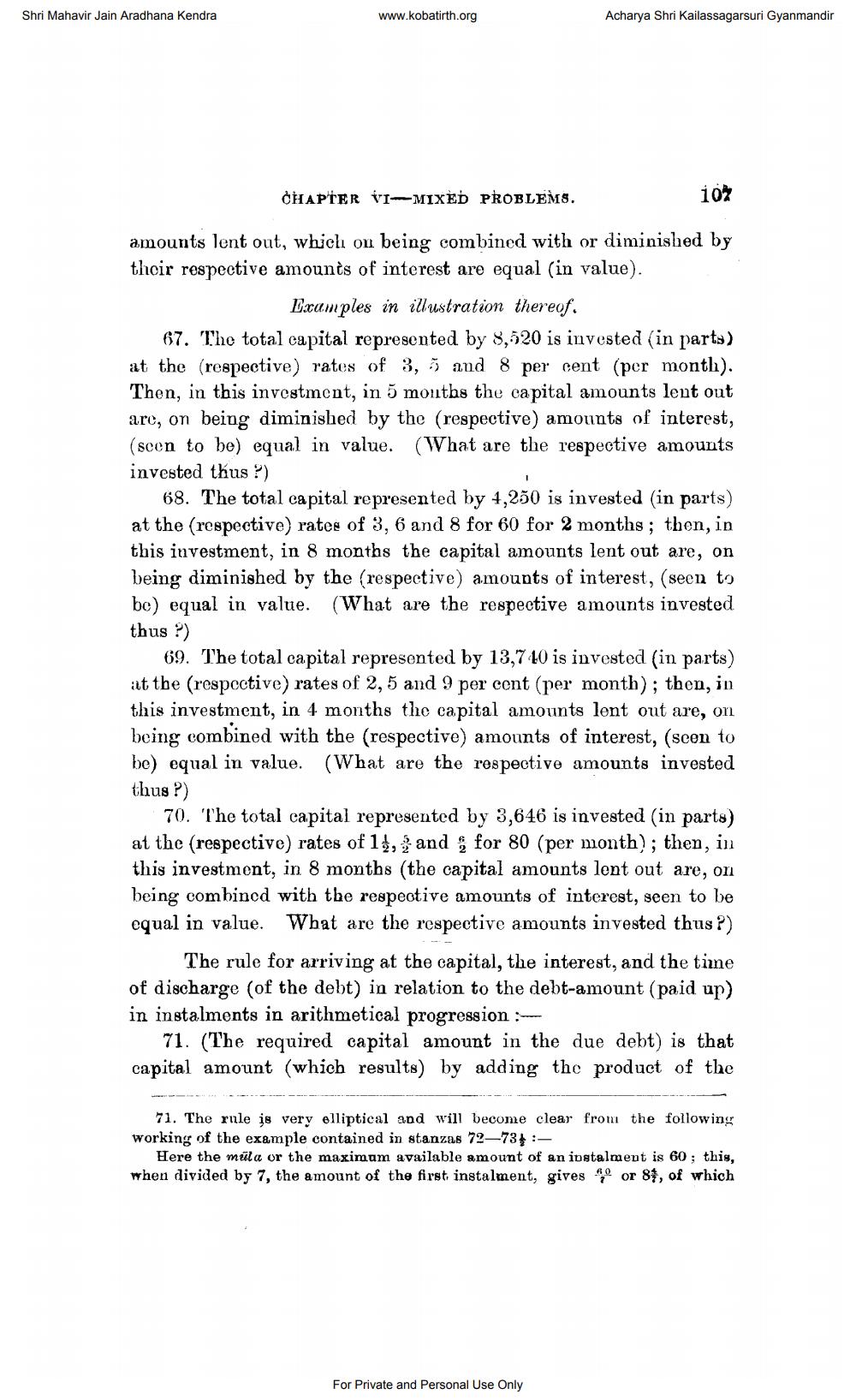________________
Shri Mahavir Jain Aradhana Kendra
www.kobatirth.org
Acharya Shri Kailassagarsuri Gyanmandir
CHAPTER VI-MIXED PROBLEMS.
10%
amounts lent out, which on being combined with or diminished by their respective amounès of interest are equal (in value).
Escamples in illustration thereof. 67. The total capital represented by 8,520 is invested (in parts) at the respective) rates of 3, ð and 8 per cent (per month).
Then, in this investment, in 5 months the capital amounts lent out arc, on being diminished by the (respective) amounts of interest, (seen to be) equal in value. (What are the respective amounts invested thus ?)
68. The total capital represented by 4,250 is invested (in parts) at the respective) rates of 3, 6 and 8 for 60 for 2 months; then, in this investment, in 8 months the capital amounts lent out are, on being diminished by the respective) amounts of interest, (seen to be) equal in value. (What are the respective amounts invested thus ?)
69. The total capital represented by 13,7 40 is invested (in parts) at the respective) rates of 2,5 and 9 per cent (per month); then, in this investment, in 4 months the capital amounts lent out are, on being combined with the (respective) amounts of interest, (scen to be) equal in value. (What are the respective amounts invested thus?)
70. The total capital represented by 3,646 is invested (in parts) at the respective) rates of 1$, and for 80 (per month); then, in this investment, in 8 months (the capital amounts lent out are, on being combined with the respective amounts of interest, seen to be equal in value. What are the respective amounts invested thus?)
The rule for arriving at the capital, the interest, and the time of discharge of the debt) in relation to the debt-amount (paid up) in instalments in arithmetical progression :
71. (The required capital amount in the due debt) is that capital amount (which results) by adding the product of the
71. The rule is very elliptical and will become clear from the following working of the example contained in stanzas 72–73 :
Here the müla or the maximum available amount of an instalment is 60 ; this, when divided by 7, the amount of the first instalment, gives 40 or 84, of which
For Private and Personal Use Only




